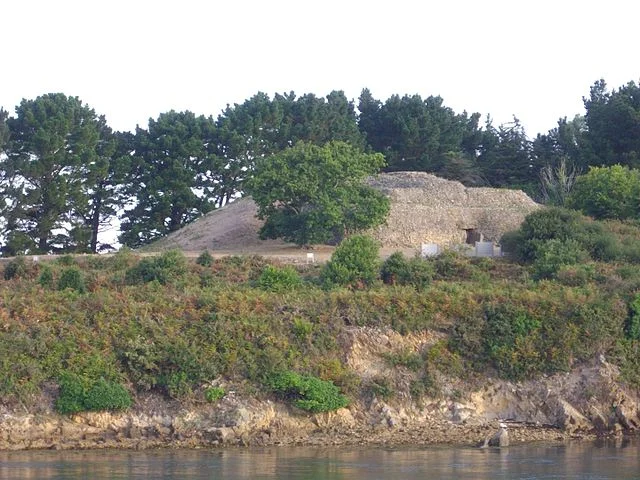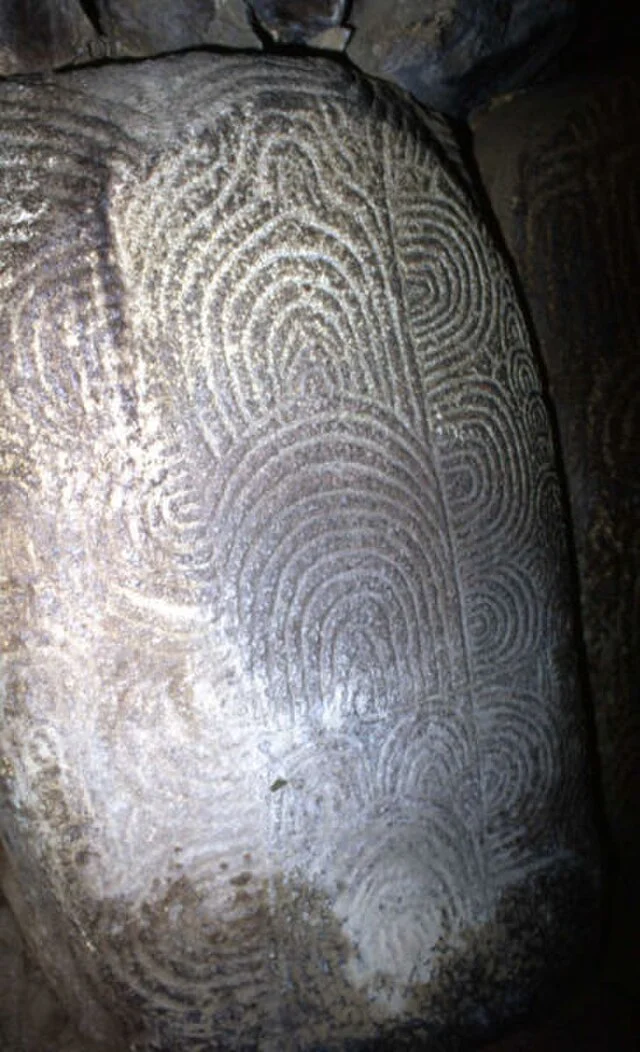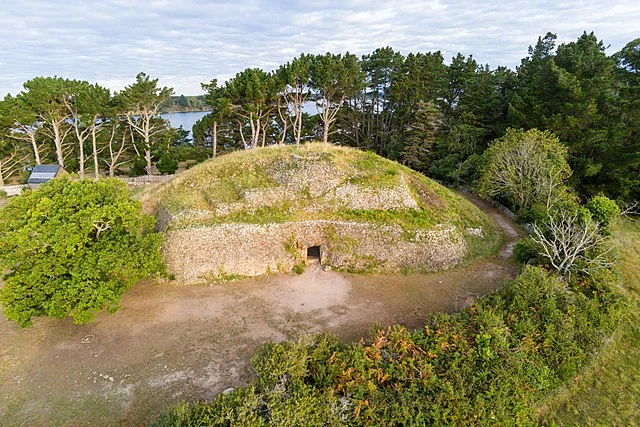The Gavrinis Passage Tomb, located on Gavrinis Island in the Gulf of Morbihan in Brittany, France, is a significant megalithic structure. It dates back to around 3,500 BC and stands as one of the most impressive examples of Neolithic architecture in Western Europe. The tomb’s construction demonstrates advanced knowledge of engineering and artistry for its time.
Get your dose of History via Email
Structure and Layout

The Gavrinis Passage Tomb consists of a long, narrow passage leading to a central burial chamber. The passage, measuring approximately 10 meters in length, is made of large granite slabs. These slabs, along with others used in the construction, were transported from nearby quarries. The burial chamber itself is a circular space, where the remains of the deceased were likely placed.
The passage and chamber are covered by a mound of earth and stones, which likely served to protect the tomb. Over time, this mound has eroded, but the structural elements remain intact.
Carvings and Artwork

One of the most remarkable features of the Gavrinis Passage Tomb is its extensive rock carvings. The interior of the tomb’s passage and chamber is decorated with intricate motifs. These carvings include spirals, meanders, and geometric shapes. These symbols are often interpreted as representations of cosmic beliefs or cultural symbols, though their exact meaning remains uncertain.
The carvings were made using a chisel-like tool, and their preservation is exceptional due to the tomb’s isolated location. The decoration offers valuable insight into the artistic practices of Neolithic people in the region.
Function and Significance

The Gavrinis Passage Tomb was likely used for burial purposes. Archaeologists believe that it served as a collective tomb for elite individuals of the Neolithic community. The tomb’s size and the effort involved in its construction suggest that it held significant social and religious importance. The presence of elaborate carvings also points to the symbolic role of the tomb in the society’s spiritual beliefs.
The structure is aligned with certain astronomical events, indicating that the builders may have had an understanding of celestial movements. This suggests that the tomb may have been used for ritual purposes, possibly linked to the afterlife or agricultural cycles.
Conclusion
The Gavrinis Passage Tomb remains one of the best-preserved and most important megalithic sites in France. Its impressive architecture and intricate carvings provide valuable insight into Neolithic life and beliefs. Despite the passage of thousands of years, the tomb continues to be an important part of our understanding of prehistoric cultures in Europe.
Source:

